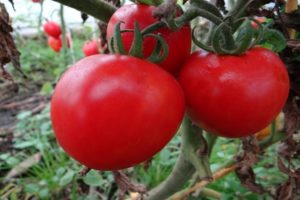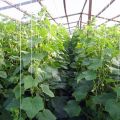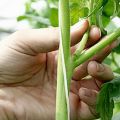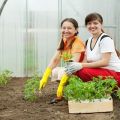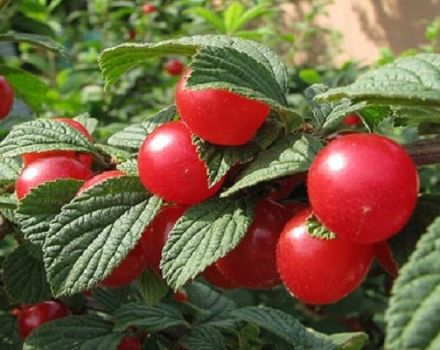How to properly grow and care for tomatoes in a greenhouse
It's no secret that tomatoes are light-loving vegetables. Therefore, many growers grow tomatoes in a greenhouse. It is in the greenhouse that optimal conditions can be created for growing tomatoes. Growing tomatoes in a greenhouse is quite difficult for novice gardeners. To understand how to grow a good crop of tomatoes in a greenhouse, you need to familiarize yourself in advance with growing this vegetable in a greenhouse.
Planting seeds
Before growing tomatoes in a greenhouse, you should read some guidelines for incubating seeds. To grow tomato seedlings for a greenhouse, seeds must be planted no earlier than the first half of March for summer cultivation, or in mid-October for winter cultivation.
Seed preparation
The technology of growing tomatoes in a greenhouse includes preliminary preparation of seeds for planting.
First, you should start selecting the highest quality planting material. The best seeds to plant are the largest seeds. They are high in nutrients and grow very quickly.
To select such seeds, you should use a special solution prepared from salt and water. To prepare it, a tablespoon of the substance should be mixed with one glass of water. When the liquid is ready, all the seeds are poured into the container. Within 5-10 minutes, a defective seed will begin to float to the surface, from which it will not be possible to grow a large crop of tomatoes.

Also, before growing tomatoes in a greenhouse, you will have to warm up all the seed. This procedure must be carried out if the seeds have been stored for a long time in a cold room before. Warming up is done 1-2 months before planting tomatoes in an unheated greenhouse. Tomatoes can be heated at home using conventional batteries. In this case, you should carefully monitor the temperature. It needs to be increased gradually from 20 to 65 degrees. At too high temperatures, it is better not to engage in heating, as this may cause the seeds to deteriorate.
To improve the yield and in the future to protect the seedlings in the winter greenhouse from various diseases, you should start disinfecting the seeds.
There are various methods for disinfecting inoculum. Some growers use a manganese solution for this. It is poured into a small container, after which the seeds are placed in the fabric. Soaking should last no longer than half an hour. You can also use a mixture made from hydrogen peroxide for this. Before soaking, the solution is heated to 45 degrees and poured into a deep plate.Then tomato seeds are placed in it for 5-10 minutes.
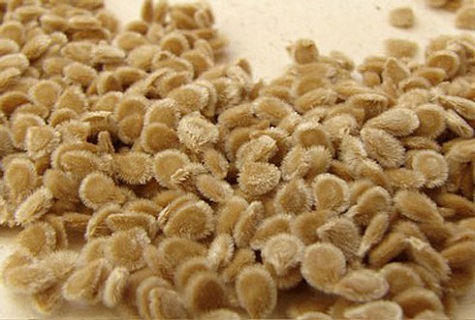
Soil preparation
You can grow good seedlings in a greenhouse with the help of a prepared soil mixture. After all, it depends on the planting soil how high-quality tomato seedlings will turn out.
To grow early tomatoes, seeds must be planted in porous soil, which contains many nutrients. To obtain healthy seedlings, it is recommended to use a soil mixture prepared from part of sand, peat and sod soil. All these components are thoroughly mixed, after which they are poured with a nutritious liquid.
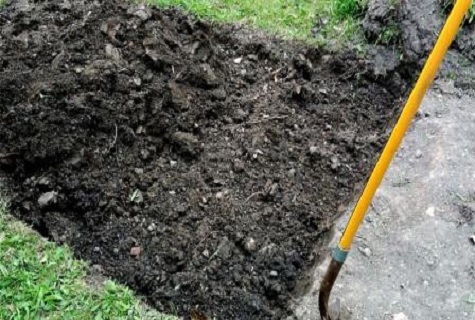
Growing tomato seedlings in unheated greenhouses can be carried out in soil consisting of completely different components. In this case, humus, a little ash and sod land are added to it. All this is mixed and, if necessary, fertilized with superphosphate.
Planting
Growing tomato seedlings in a greenhouse in the first months is carried out in special small containers. Therefore, it is recommended to plant seeds in small pots made from peat. First, they are all filled with the soil mixture created earlier. After that, the earth in pots is spilled with heated water.

When the ground dries up a little, you can start planting. Greenhouse tomatoes should not grow too close in winter. Therefore, we plant seeds at a distance of 2-5 cm from each other. To make the seedlings grow faster, all containers with planted tomatoes are covered with foil and transferred to a lighted place.
Care
It is necessary that the cultivation and care of young seedlings are carried out correctly. Therefore, you should familiarize yourself with how to properly care for young seedlings. Watering young bushes before transplanting is necessary only twice. If you water too often, the seedlings will begin to stretch out strongly. The first time the procedure is carried out after the appearance of the first shoots. Next time, watering will have to be done in 2-3 weeks. Watering should be done at a temperature of at least 20-25 degrees.
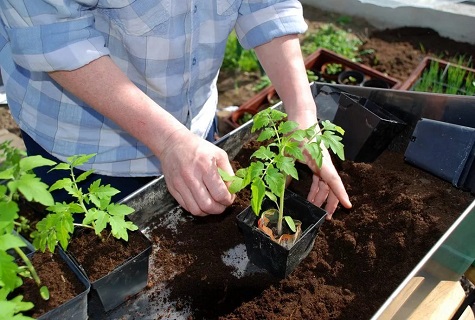
Some vegetable growers are engaged in feeding young seedlings. However, before planting seedlings in a greenhouse, it is not recommended to do this, since due to the use of fertilizers, the bushes can also stretch out a lot.
Transplanting seedlings
Growing tomatoes in a greenhouse in winter begins with transplanting seedlings. It is not so easy to grow a good harvest in a greenhouse environment. It is necessary to study in advance the basic secrets of growing tomatoes in a greenhouse.

Greenhouse preparation
Before growing tomatoes in a greenhouse, you will have to start preparing a greenhouse. Preparatory work should be carried out at the beginning of autumn so that the room is completely ready for winter. First, it is completely cleaned of plant residues that were previously grown there. All of the following steps depend on the room in which you will be breeding a tomato.
- Greenhouse with a frame made of wood. It is very dangerous to grow tomatoes in a greenhouse made of wood in winter, since it is in such wooden structures that various insects and diseases that are dangerous to bushes most often appear. Therefore, before growing tomatoes in a greenhouse from a tree, it will have to be fumigated with sulfur in advance. For this, the substance is mixed with a small amount of kerosene and crumbles to the ground. Then all this is set on fire and smolders for about 10 minutes. This is enough time to get rid of mold, mildew and other infections.

- Greenhouse with a metal frame. Most modern greenhouses are made from metal frames. In this case, sulfur cannot be used during processing, since it may cause corrosion. Instead, the walls are treated with lime mortar. To prepare it, half a liter of lime is diluted in 10 liters of water and infused for 7-8 hours.
After decontamination, the greenhouse will need to be thoroughly ventilated and the walls should be cleaned with a brush.
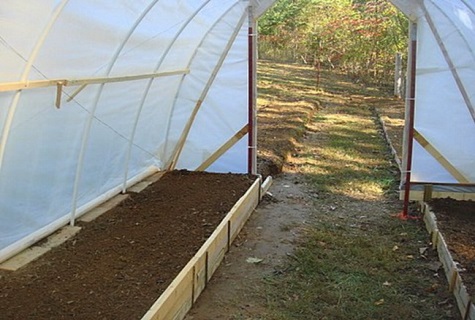
Soil preparation
It is imperative to prepare the soil before growing large tomatoes. Proper preparation of the soil for young bushes will help to get a high-quality harvest.
If the cultivation of vegetables in the greenhouse has been carried out for 5-7 years, then you should think about a complete replacement of the soil.
The soil becomes unsuitable for growing vegetables after five years of continuous use. For some growers, it is problematic to periodically engage in complete soil replacement. In such cases, you will have to deal with the disinfection of the earth. Bordeaux liquid, copper sulfate or garden lime are used to disinfect the soil. If desired, the soil can be watered several times with hot boiled water.
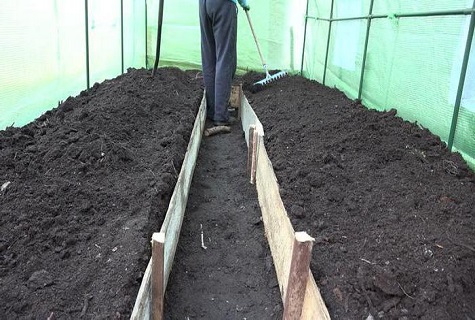
Tomato roots do not tolerate low temperatures well and therefore it is recommended to think about additional insulation in advance. We'll have to completely clear the area for tomatoes from the ground and insulate it with sawdust or straw. A small layer of compost and soil is laid out on top. If desired, you can add a little organic fertilizing with ash or sand to the soil.
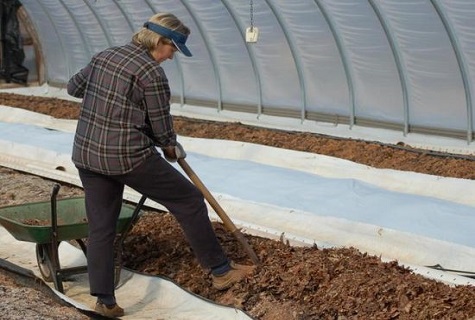
Planting
Before you start figuring out how to properly grow and care for tomatoes in a greenhouse, you need to familiarize yourself with the features of planting this vegetable.
First you need to decide on the most suitable landing scheme. The choice of the scheme directly depends on the variety of planted tomatoes:
- Stunted. We grow such tomatoes in a checkerboard pattern with a distance between each bush of at least 50-60 cm.
- Determinant. They plant in 2-3 rows, the distance between which should be 50 cm. The bushes in each row are planted at intervals of 20-30 cm. This will be enough so that the plants do not shade each other.
- Tall. These plants are the largest, and therefore, the rows should be 85 cm apart from each other.The bushes plant at a distance of 70 cm.
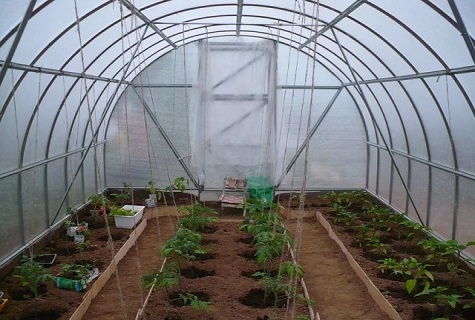
Having chosen the most suitable scheme, you can start planting. It is recommended to replant seedlings 50-60 days after planting seeds. By this time, all the bushes will have a strong root system, which will tolerate the transplant without any problems.
First, you should water the soil in which the seedlings are grown and remove it from the containers. If the root system of the tomato has grown a lot, then you will have to shorten the roots by 2-5 cm. After removing the seedlings, you can start creating holes. They are not dug too deep.
It will be enough to make holes about 10-15 cm deep. A special mixture made from superphosphate, wood ash and humus is added to each of them. You can also add 1-2 liters of manganese solution to them.
During planting, the seedlings should go deep into the ground until the first leaves. If they are too large, then you can dust a small part of the stem with earth. When all the seedlings are planted, the soil around them is compacted and sprayed with Bordeaux mixture. It is recommended to leave the tomatoes alone for a few days after planting. This is necessary so that they can fully settle into a new place.

Care
Growing tomatoes in a greenhouse must be accompanied by constant care. After all, it is the correct care of tomatoes in the greenhouse from planting to harvest that will help to get the highest quality fruits. It is advisable to know in advance how to care for tomatoes in the greenhouse.

Watering
Quite often, the skin of tomatoes grown in greenhouses begins to crack. Most often, this problem appears due to improper irrigation of the bushes. Due to excess moisture, tomatoes begin to be saturated with liquid and crack. Therefore, you need to develop an optimal irrigation system. The frequency of irrigation depends on the varieties grown. Moisture-loving tomato species need to be watered daily, once a day.All other varieties are watered every 3-4 days.

Top dressing
You only need to feed tomatoes in winter greenhouses twice. For the first time, the procedure is carried out a week after planting the bushes. The next time, feeding should be done after the first fruits appear on the bushes.
Ammonium or calcium nitrate in powder form is added to the soil. It can be added to the mortar or simply sprinkled with dry powder over the soil.
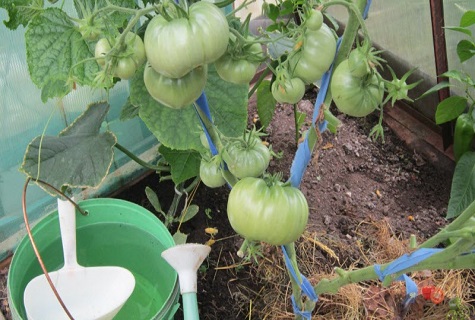
Conclusion
Planting and caring for tomatoes in greenhouse conditions is not an easy job, which is best prepared in advance. Therefore, you should familiarize yourself with how to properly care for tomatoes planted in greenhouses.
